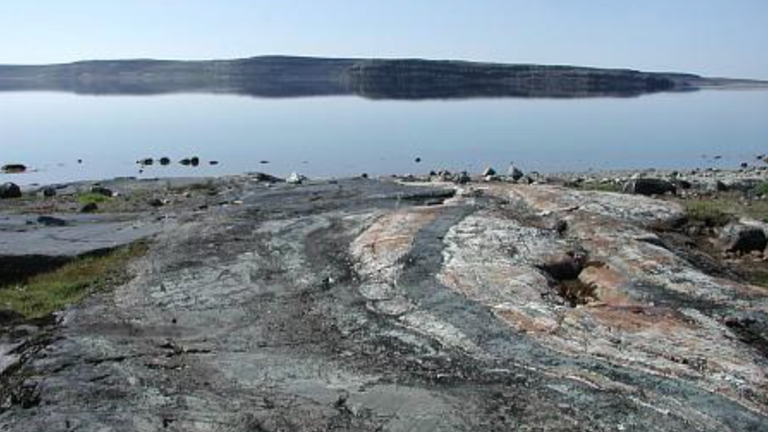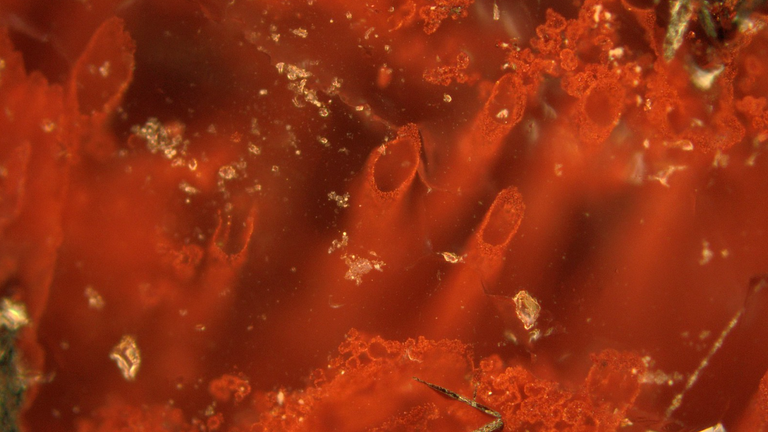[ad_1]
Life on Earth could have begun much earlier than previously thought, according to a new study.
The evidence comes in a fist-sized rock from Quebec, Canada, which is estimated to be between 3.75 and 4.28 billion years old.
Inside this rock, scientists at University College London have found a mysterious, complex plant-like structure.
The rock was collected from the Nuvvuagittuq Greenstone Belt (NGB) formation which contains some of the oldest rocks on the surface of the planet.
It was once part of the seafloor and although scientists aren’t sure whether that was 3.75 or 4.28 billion years ago, it remains a vital location for evidence of the very distant past.
A previous study of the rock collected from the NGB found tiny filaments, knobs and tubes inside of it which appeared to have been made by bacteria.
The structures date back 300 million years before what is generally accepted to be the first sign of ancient life.
They were similar to those produced by modern bacteria that live in hydrothermal vents beneath the sea, meaning they could be the earliest sign of life ever discovered.
The scientific community, however, wasn’t unanimous in that appraisal, with some saying the structures may have been created through chemical processes.
Now, a further analysis of the same rock has discovered an even more complex structure – a stem with parallel branches on one side that is nearly a centimetre long.
Alongside that and the filaments, knobs and tubes, are hundreds of distorted spheres.
While some of these structures could potentially have been created through chance chemical reactions, the tree-like stem was most probably biological because no chemical structure is known like it.
A study published today in the journal Science Advances proposes it is the earliest evidence ever that diverse bacterial life existed within a few hundred million years of the planet forming.
Mineralised chemical by-products were also found in the rock that suggest how these early bacteria got their energy.
Some of these by-products are consistent with ancient microbes living off iron, sulphur and possibly also carbon dioxide and light.
Read more: Scientists discover what might be the farthest possible star ever seen
The study’s lead author, Dr Dominic Papineau of UCL, said: “Using many different lines of evidence, our study strongly suggests a number of different types of bacteria existed on Earth between 3.75 and 4.28 billion years ago.
“This means life could have begun as little as 300 million years after Earth formed. In geological terms, this is quick – about one spin of the Sun around the galaxy,” he added.
[ad_2]





